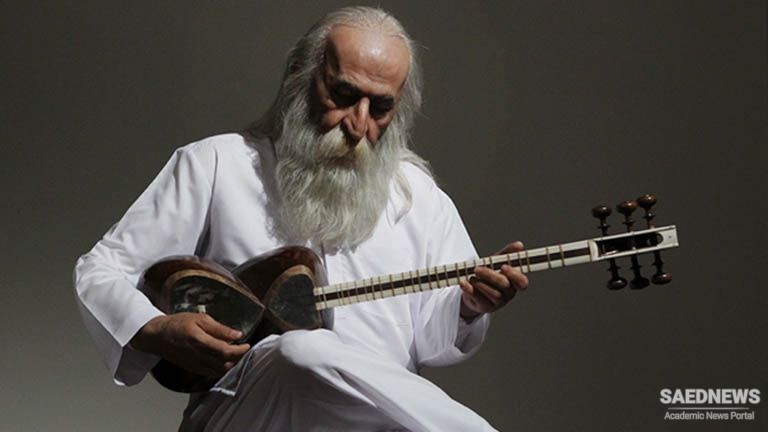It is strongly believed that Tar is the descendent of rubab which is played in Pakistan and Afghanistan. After is has been adopted to Persian art by the musicians it became a common urban instrument. The long and narrow neck of Tar has a flat fingerboard which ends with six wooden pegs. It has three courses of double "singing" strings which lies on the fingerboard There are also two pairs of shorter strings which is under the bass and over two small copper bridges on the upper side of the fingerboard. Tuning of these strings are variable according to the performer's taste.
In Persian the word "Tar" means string and a Persian Tar is a stringed vibrating musical instrument. The initial sound is produced by a stretched string which is vibrating. These vibrating strings are called Chordophones. Persians name their favorite instrument as "Târ-e Shirâz" which means the Tar from Shiraz. Persian tar is simply a stringed instrument played with a plectrum. The plectrum is used to make tinkle the instrument. Persian Tar has also frets that have been tied on the neck.

Pressing a string against a fret determines the vibration length of the string and its resultant pitch. Frets of traditional Tars are made of gut. They are embedded around the neck of it. Every fret consists of 3 or 4 threads according to the tradition. The frets are moveable in order to get a new arrange of frets. The number of classical Tar frets are between 22 and 28. The frets between whole tone and half tone frets representing the micro tones.
Traditional style was born in the Qajar period. Persian tar was held on the chest up to early 1920's but later on it was brought down and was put on the legs. Not only the playing technique was changed but also some changes occurred in its structure. There are some recordings left from great masters. Mirza Abdollah and Mirza Hussein Qoli Farahani were very talented composers and composed beautiful pieces which are still the source of inspiration for many musicians.
The tar is one of the main instruments of the Persian music. It is played both in ensemble and as a solo instrument. The volume of the sound is comparable with other traditional musical instruments like santoor, ney, oud and kamanche and can be played without using a microphone. Beside its usage in modern Iran ensembles, the tar has been played in orchestras.


 Woody Guthrie and the Sense of Guitar
Woody Guthrie and the Sense of Guitar














































